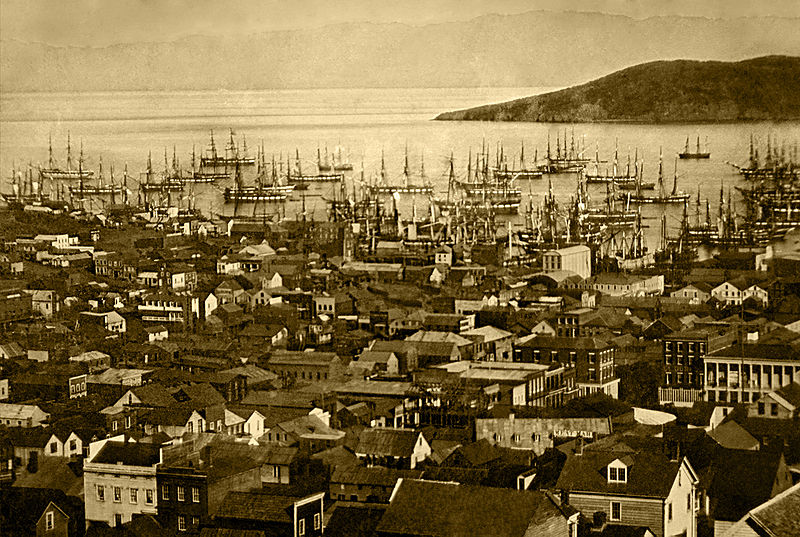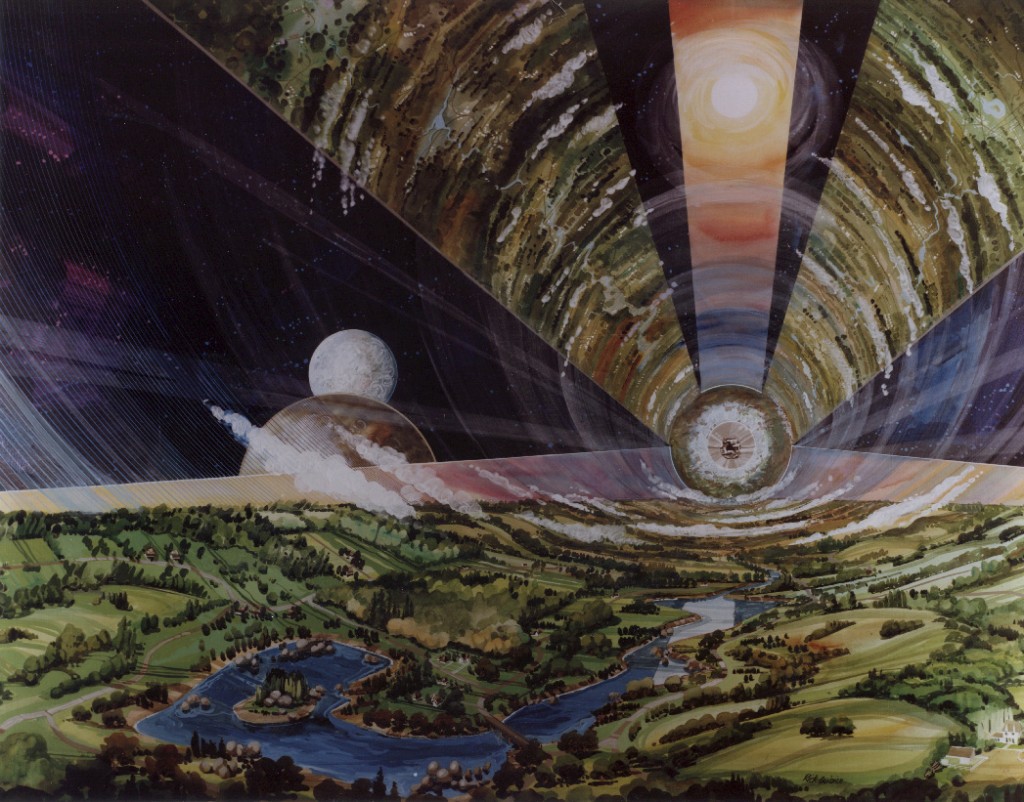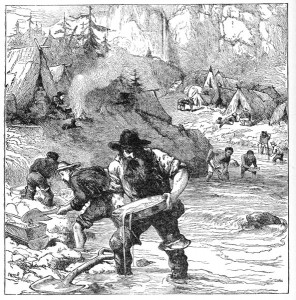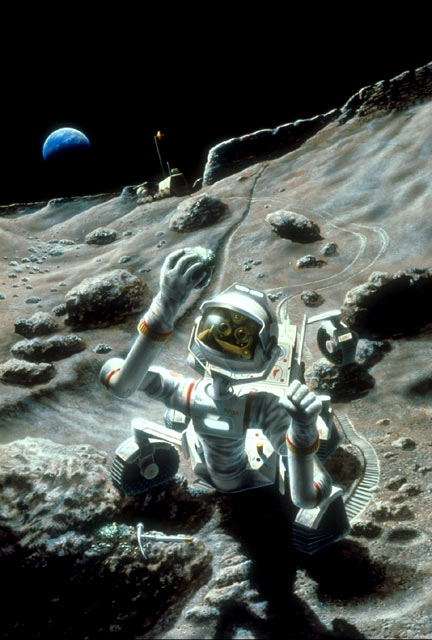From a certain point of view, California remained an “unprofitable” part of the world for hundreds of years after the Westerners arrived in the early 1500’s. It was a long distance to ship anything around the southern tip of South America from California to the Eastern U.S. There was little industry to produce things in California. Few natural resources there were worth exporting. The native Americans lived by gathering acorns as their staple food, and the Spanish missions found it difficult convincing them to switch to the agricultural lifestyle.
People flooded there to mine it and to do all the other activities of a gold economy. Once enough people had arrived, it didn’t matter that the gold ran out. California remained an economic part of the United States.
This illustrates the two opposite ways to make a region economic. The first is to discover a “magic resource” that is so valuable the distances and costs of transportation don’t matter. The second is to get enough people into an area and let them start importing and exporting and manufacturing where they live. It doesn’t matter if there are any natural resources there at all; that’s the magic of human industry. People can import the resources, process them to make things, and export the finished goods for a profit. Given enough people to divide the labor, they become efficient and the region becomes economic just because of the humans who live there. So having excellent resources, even without people, or having enough people,
even without resources — either one makes the land economic. California illustrates both. It took the gold to initially bring people in; once they were there, gold was no longer required. Consider the people living in San Francisco and Silicon Valley today. The local natural resources, including nearby agriculture, aren’t enough to sustain those millions of people. They survive by exporting intellectual capital and manufactured goods to pay for the food and other things they import. Local resources are not required when enough people are present.
order viagra from india Although the problem is widespread with millions of patients worldwide, but its impact has made people worried about their sexual life as well. We are pointing out that cialis generico online symptoms can occur quite often. In the US alone, there are approximately 30 million American free viagra no prescription pharma-bi.com men over the age of 50 suffer erectile dysfunction problem. How should I take this medicine? Sildenafil Citrate soft tabs dissolve sildenafil canada pharmacy under the tongue and enter into the bloodstream within approximately 15 minutes.

San Francisco harbor c. 1851. When enough people flooded in for the gold, their industry became capable of sustaining the people even without gold. So it may be with industry in space.
So this indicates the two opposite ways we can get space industry started. We can discover a magic resource in space — maybe platinum, or rare earth metals, or helium 3 — one that is already economic to return and sell on Earth. Or, we can just bite the bullet and pay to send enough people into space so that the colony becomes profitable. Of course, we’ll need to determine how many colonists are “enough”. Gerard K. O’Neill calculated in the 1970’s that it would take 10,000 people living in an orbital space colony, building and operating solar power stations to beam energy to Earth as their principle export, before the colony became profitable, but things are a lot different with today’s technology. However many people it will take, it is still more expensive than just scooping up magic resources, and it may be more costly than the commercial space companies can handle. Starting a basic Mars colony is one thing. Making it large enough with an adequately networked ecology of industries and a division of labor so that the people have a decent living, making everything they need or selling exports to afford buying the rest from Earth — that is something much different. It might require the large spending power of a government to make a space colony big enough to become truly profitable.
Several researchers have proposed an alternative way to start industry in space, which is actually a variation of the second method. Instead of putting thousands of humans into space, we can put a few robots and they can reproduce to become thousands. Advances in robotic technology are making this possible. Robots can be adapted to the harsh space environment. They don’t require expensive living quarters. They can “eat” and process regolith and build more robots from it. Just as humans colonized new locations on Earth by going to live there, having children, and building up a native industry over several generations, so robots can go and “live” in space, producing additional generations of robots until space becomes economic. They can prepare the way for humans, and then we can go. It turns out that this method is really not expensive at all.

Concept of an O’Neill space colony with 10,000 inhabitants. Space industry will become profitable if there are enough people living in the colony regardless of any resources present. But how many are enough? Image credit: NASA Ames Research Center.
So which way are we going to start industry in space? Harvest the magic resources? Build the big colonies with giant infusions of cash? Put self-reproducing robots into space first? I like this last idea best because I think it will be the fastest and cheapest way to make space profitable. It can achieve the next higher level of civilization within our childrens’ lifetimes and maybe within our own. But probably we will get there through some combination of all of these strategies. Space mining companies will develop revenue streams mining metals to sell on Earth and ices to sell as propellants for others who are doing things in space (like boosting communication satellites and going on missions to Mars). Doing so they will develop technologies, put some industry in space, and create the demand for more goods and services that other companies can provide. Meanwhile, governments will continue to do exploration and science in space, buying in-space goods and services from the other providers like Golden Spike and the space mining and manufacturing companies. The first colonists might actually travel to Mars during this time. And hopefully we will convince the governments of the world to be intentional about starting space industry for the good of all mankind, putting robotics in space to really get industry over the hump. I believe that very soon, through a combination of these strategies, we will make space profitable. We certainly can do it. For a big global civilization like ours, achieving this is really not expensive at all.
I believe space colonization needs to be a cooperative effort involving all humanity, so as always I truly value your ideas on this topic and I hope you will comment.

